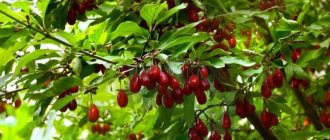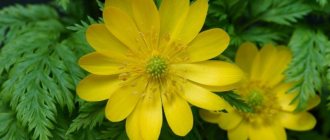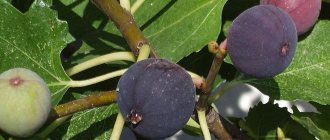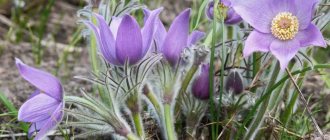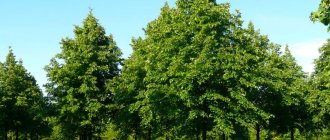There are 60 species of momordica in the world, including annual and perennial vines and even shrubs. But only the species Momordica balsamina (M. balsam) and Momordica charantia (M. charantia) are widely cultivated everywhere, from which many different varieties have been developed. Depending on the variety, momordica fruits differ:
- in shape (elongated, rounded),
- color (from dark green or almost white in technical ripeness to orange in biological ripeness),
- weight (from 50 to 350 g or more).
Momordica is slowly being recognized in Russia; it can increasingly be found in garden plots, where it is called either Indian cucumber or Chinese melon. The seeds came to me by accident - they were brought by friends.
Growing momordica from seeds
At home, momordica can be propagated by seeds, seedlings and cuttings.
When to plant momordica:
- Directly into open ground: when the night temperature is not lower than 10-12 degrees. In the middle zone - this is the beginning of May (protected ground) and mid-May - mid-June (OG).
- Growing seedlings: February (for a greenhouse) and March-April (for open ground).
Sowing seedlings
Nutrient soil is prepared for the plant. You can use ready-made store-bought soil for vegetables or make it yourself:
- 2 parts leaf soil,
- 2 parts humus,
- 1 part sand.
Seeds collected from own plants that season
Before sowing, the seeds are soaked overnight in a pink solution of potassium permanganate. The shell is very dense, so I did scarification - you can file the tip or simply bite the seed (carefully).
Optimum temperature 22-25°C
Planting depth: 2-3 cm
Shoots appear in 7-8 days
Planted in the ground at the age of 3 weeks
From my experience: separate germination of seeds did not give anything, but after planting directly in seedling pots - 100% germination.
Individual 200 ml cups are suitable for planting.
I sowed 4 plants per cupThe younger the seedlings are, the better they tolerate picking
How to care for seedlings:
- Location – as close to the light as possible.
- Do not overdry the soil.
- Spraying with a spray bottle is useful in the evenings.
You can feed the seedlings with any universal fertilizer for vegetable crops according to the instructions.
Before planting in the ground, it is necessary to harden the seedlings.
Reproduction
Planting material for propagation of momordica can be seeds or cuttings. The seed method is most often used, since it can be used to obtain a large number of plants. If a gardener just wants to try growing and caring for this crop, then it’s worth starting with the vegetative method.
Seeds for seedlings
You can purchase Indian cucumber seeds either in a flower shop or online. If one of your neighbors grows this plant on their property, you can ask them to collect the seeds. The germination rate of planting material is high if it is stored in a dry place, but with high humidity it decreases sharply.
Deadlines
The optimal time for sowing seeds is the second half of April. You can do this earlier, but in this case the seedlings will not have enough daylight hours, so it will be necessary to use a source of additional lighting.
In terms of timing, you should be guided by the fact that after sowing until planting in open ground, approximately a month will pass.
Pre-sowing preparation
Long pre-sowing preparation is not needed. It is enough to keep the seeds in warm water for a day at a temperature of 30-35°C. A couple of crystals of potassium permanganate should be added to the water so that the color of the solution is slightly pink. Seeds should not be left in water for longer than a day, as they will begin to rot.
Substrate
For seedlings, growing in peat tablets is suitable. You can create a suitable soil mixture yourself. For this you need the following components:
- 3 parts of garden soil;
- 1 part rotted mullein;
- 1 part of leaf or turf soil.
Sometimes they use ordinary ready-made soil for seedlings, which they buy at a flower shop.
Landing technology
Planting momordica is carried out in stages:
- the planting box is filled 2/3 with substrate;
- the seeds are placed edge-on and lightly immersed in the ground;
- the crops are covered with soil 3-4 cm from above;
- water the soil with warm water.
The planting box or pot is then covered with glass or transparent plastic film, under which greenhouse conditions are created. The box is placed in a warm place with a temperature of at least 20°C. After about a week or two, with normal care, the first seedlings should appear.
Seedling care
After the first leaf appears, the film or glass is removed, but the sprouts are periodically sprayed with a spray bottle. It is necessary to ensure that the seedlings are not exposed to direct sunlight, as this will destroy them.
At the stage of formation of the second true leaf, young momordica plants are fed for the first time with a universal mineral complex in half concentration. After another two weeks, fertilize with organic fertilizers.
Watering should be periodic, but not too abundant. Before transplanting into open ground, seedlings begin to be hardened off. Adaptation to street conditions is carried out for at least two weeks, gradually increasing the time spent on the street.
After the momordica seedlings have formed five true leaves and reached a height of about 25 cm, they are ready to be transplanted to a permanent location.
Sowing in open ground
Pre-sowing preparation is carried out using the same method as when growing seedlings, but germination with the seedless method is much less than when sowing at home.
Before planting, the beds are well loosened and carefully leveled. After this, shallow holes are marked at a distance of at least 80-90 cm from each other. The seeds are deepened by 1.5-2 cm, after which they are sprinkled on top with a thin layer of rotted cow manure. Then the plantings are moistened by sprinkling. Watering from a hose is not used, as the pressure can wash the seeds out of the ground.
If frost is predicted, beds with fresh plantings are covered in the evening with film or agrofibre. For the rapid growth and development of young plants, even during planting, you can install a support next to each hole, to which a thin stem will be attached.
By cuttings
Momordica cuttings are possible only at high temperatures above 25°C. The stems can be rooted in a substrate or in water. To create roots in the soil, mix sand and peat in equal parts and then moisten them. It is best to take rainwater or softened water. After the roots appear and reach a size of 2-3 cm, they can be transplanted to a permanent place.
After transplanting, the cuttings are covered with a three-liter jar so that the leaves do not touch the glass. After a few days, when further growth of the plant is noticeable, the jar can be removed.
Planting seedlings in the ground
Seedlings are planted after the threat of return frosts has passed and the soil has warmed to 10-12 degrees.
The plant does not tolerate even light frosts. A drop below 10 degrees is also detrimental.
Conditions for growing momordica in open ground:
Sunny locations with light shade at midday. The area should be protected from the wind.
Moisture- and air-permeable fertile soils with a neutral or slightly acidic reaction. The best option is well-fertilized loamy soils that have a neutral environmental reaction.
Momordica is a fairly actively growing vine; between plants you need to leave 75–85 cm of free soil.
To make the seedlings better tolerate the procedure, spray them with Epin the day before. Try to carefully transfer the plant into the hole so as not to damage the root system.
After planting seedlings in the ground:
- Immediately after planting, water thoroughly and monitor soil moisture for a week.
- For the first 2–3 days, shade the seedlings from direct sunlight.
- The liana can reach 2-3 meters in length, so it is necessary to provide supports.
You can also grow the plant in 5-10 liter pots. In an apartment, on a balcony or loggia, momordica grows without problems. Momordica is a bee-pollinated plant. Therefore, when growing at home, you will need to pollinate it manually. A female flower can be identified by the presence of an ovary.
Content
- General information
- Types and varieties of momordica
- Momordica planting and care in open ground
- Watering momordica
- Soil for momordica
- Momordica transplant
- Momordiki garter
- Fertilizer for momordica
- Blooming momordica
- Pruning momordica
- Preparing momordiki for winter
- Momordica growing from seeds
- Propagation of momordica by cuttings
- Diseases and pests
- Momordica beneficial properties
- The use of momordica in folk medicine
- Contraindications to the use of momordica
- Conclusion
Caring for a plant in open ground
Momordica is unpretentious, if you grow cucumbers on your plot, you can definitely handle it. Their agricultural technology is similar.
The liana develops actively and thickens quickly.
The first step is to remove all side shoots at a height of 45–50 cm.
After the first ovaries appear, it is necessary to thin out the crown, removing the thickest lashes, and pinch the main stem at a height of 1.5 m.
Water at least once a week with warm water. A bucket is enough for one plant.
It is best to water in the evening, and loosen the soil in the morning.
The best option is to use complex fertilizers, such as nitroammophoska.
From organics: a mixture of mullein and bird droppings (1:2) - diluted 12 times with water. For each bush, once every 15–20 days you need to pour 4–5 liters of this solution or pour 0.5 tbsp. l. nitroammofoski.
When working with the plant, be careful and remember to wear gloves. Before fruiting begins, the leaves can cause burns.
The stepsons remaining after pruning can be used as cuttings and rooted. They will take root easily.
Momordica is an early ripening plant and enters the flowering phase 40-50 days after sowing. The fruits can be collected 10-12 days after pollination.
Momordica: cultivation
Before planting this plant, you need to familiarize yourself with the features of its cultivation.
Seed preparation
Before planting, the seeds must be prepared
Many gardeners propagate this plant from cuttings. However, the most effective way is to grow using seeds.
Before you start planting the seed, you must first prepare it. First you need to select the most suitable seeds for planting. Darker seeds should be planted as they are fully ripe. The selected seed must be rubbed with soft sandpaper. After this, the seeds are placed in a manganese solution for 5-7 days.
Important! You should not keep seeds in a humid environment for too long, as they may begin to rot.
Formation of momordica
When forming a Chinese pomegranate, you should follow these tips:
- All lateral shoots located at a height of 50 centimeters from the ground surface are cut off from the main stem;
- Thinning of the bush should be done immediately after the first ovaries appear;
- to increase productivity, stems are regularly cut to 50 centimeters;
- During the pruning process, all dried and wilted shoots must be removed.
Harvesting
Professionals advise picking momordica fruits slightly unripe - this way they are less bitter - but you can also eat the pulp of ripened seeds. Green fruits keep well in the refrigerator for up to 2 weeks.
Preparation for use as a medicine:
- leaves are collected in May,
- seeds: in July-August,
- rhizomes - in October.
Fully ripened fruits open, their edges bend, and they become like large, loose flowers with three “petals,” each of which is curled toward the base of the fruit. Ripe fruits can produce up to three dozen seeds. The fruit pulp is quite juicy, dark red in color, good taste, with a barely noticeable bitterness.
Momordica beneficial properties
Momordica has gained its popularity due to its medicinal properties. The fruits and shoots of this useful crop are rich in carotene, insulin-like peptides, calcium, fatty oils, alkaloids, phenols, amino acids, and sapolins.
Indian cucumber allows you to get rid of many diseases, including such dangerous ones as oncology. The plant is able to normalize blood pressure, reduce the glycemic index and eliminate tumor growths at the initial stage. It is recommended for diabetics to maintain normal well-being, which is provided by the carotene, peptides and alkaloids included in the culture.
Momordica seeds are used to treat the gastrointestinal tract. Since they contain a large amount of fat, they effectively heal ulcerative lesions of the stomach and intestines.
The plant has a strong diuretic effect, therefore it effectively removes fluid from the body and also cleanses the bile ducts, preventing stagnation of bile.
The leaf plates of momordica have a stretching property. For this reason, they are applied to the wound surface and bites of poisonous reptiles and insects. Lotions based on them eliminate pain, remove toxic substances and eliminate the inflammatory process.
The pulp of the fruit contains a large amount of vitamins that have a positive effect on vision, nails, skin, teeth and hair.
Since the fruit contains vitamin C, it can be used for ailments of viral etiology. In addition, it has strong antioxidant properties.
The use of momordica improves vascular permeability, normalizes blood clotting and eliminates inflammatory processes. In dietetics, it is used due to the fact that it effectively normalizes metabolic processes in the body, stimulates weight loss and is a natural, safe energy drink that helps reduce food consumption and convert it into energy rather than fat.
Useful properties and use in folk medicine
In Japan, momordica is called a vegetable of longevity, in India - a divine fruit. All parts of the plant are widely used in oriental medicine:
- to normalize blood sugar levels, blood pressure,
- destruction of viruses, bacteria, fungi, gastrointestinal infections,
- recommended for the treatment of cancer and HIV,
- extract from leaves and fruits - to relieve itching from insect bites and allergies,
- A natural antibiotic, a decoction of the leaves is taken at the onset of the disease.
Momordica increases hemoglobin, improves metabolic processes and serves as an expectorant.
Before use, check if you have allergies - you can drop the solution or infusion on your wrist and wait a quarter of an hour. If the place where you dropped it begins to itch or becomes very red, then it is better to refuse this medicine.
Other contraindications:
- pregnancy and lactation,
- some gastrointestinal diseases.
Be sure to consult your doctor first!
Watering momordica
Momordica is a moisture-loving plant, so it is necessary to ensure that the soil does not dry out. If the summer is hot, then the crop requires abundant watering. In this case, it needs to be watered twice a week, adding one bucket of water under the bush.
If it is not possible to water the plant according to this schedule, you can do it once a week, adding two buckets of water under the bush. To prevent rapid evaporation of moisture, the space under and around the bushes must be mulched with dry peat or compost.
Use in cooking
It is usually prepared from green unripe fruits, which contain a lot of protein. In my opinion, the taste in the dishes is average between zucchini and eggplant.
First of all, the fruits should be soaked for about 1 hour in salted water. This will help remove the bitterness. For the same reason, the inner part with the seeds is removed.
What you can cook: stews, salads, seasonings, pickles. Pairs well with fatty meats, Indian spices, coconut milk, cumin, onions and chili peppers.
I found a few more unusual recipes on Instagram:
- The founder of the SeDeK Agrofirm, Sergei Dubinin, borrowed the recipe for momordica tea from the Asians. Green fruits should be cut into rings and dried. According to him, the tea is not bitter and you can eat slices.
- @varenievar prepared confiture from momordica and lime juice. According to reviews, it looks like oriental sweets.
- Used as a curry-like seasoning - add crushed leaves a couple of minutes before dishes are ready. The orange pulp can also be dried and ground into powder.
- Orange pulp powder is used as a natural coloring agent for rice and other dishes.
General information
The most common cultivated species of Chinese melon are Cochin Momordica and Momordica charantia. Its homeland is the tropical regions of China, the Caribbean islands and India. Some plant species can also be found in Crimea. The entire plant is edible, from fruits to leaves. In addition, momordica also has medicinal properties.
Despite the fact that momordica is an exotic plant, it has managed to take root in many garden areas of our country. Some gardeners prefer to plant momordica because of its decorative value, others love it for its tasty fruits, and still others are attracted by the fact that it is a medicinal plant.
The plant is popularly called Chinese melon and Indian cucumber. It can be grown not only in open ground, but also on the balcony or as a home potted crop. Growing and caring for momordica is not difficult, so even a novice gardener can add an Indian cucumber to their collection of plants.
Caring for Mormodica seedlings
Feed the seedlings with weak solutions of potassium and phosphorus fertilizers. In mid-May, begin hardening by opening the window on warm days.
At the end of May at the beginning of June, plant the plants in the garden in sunny areas protected from the wind. Leave 1 m between bushes.
Momordica grows in shoots up to 3-4 m. A friend has only 1 plant covering his entire balcony.
Until the seedlings get stronger, cover them from the burning sun with newspapers at lunchtime. Immediately install trellises along which the shoots will crawl.
Momordica: what kind of plant is this?
Momordica complements a number of exotic pumpkin crops, which I have already written about earlier (crooknecks, luffa, tladianta, lagenaria). Momordica is translated from Latin as “biting”. And all this is thanks to the unusual appearance of the plant’s fruits with terrifying spines, as well as its not entirely attractive biological feature: the entire plant, including the fruits, is covered with burning hairs that cause unpleasant sensations, even burning human skin upon contact.
Momordica has many other names, such as Chinese bitter melon or Indian cucumber . Despite its tropical origin (Africa, Asia, Australia, India), this plant is increasingly being successfully grown in our country. Our Far Eastern amateur gardeners use it mainly for decorative purposes to decorate loggias or balconies.
Photo: momordica is used as a decorative climbing vine
Description and features
- An annual or perennial liana, growing up to 2.5 m, with large leaves and rich yellow flowers on long petioles, emitting an aroma very similar to jasmine.
- The fruits set very quickly, immediately after pollination. Outwardly, it has a very unattractive appearance with wrinkled skin and a sharp protrusion at the end. However, this is only from the outside.
- This vegetable tastes very pleasant, reminiscent of a pumpkin or cucumber; some say it is indistinguishable from a ripe persimmon. For a better taste, it is better to peel the fruit, which is bitter.
- When the fruits and berries are overripe, they crack into 3 lobes, from which the seeds spill out.
| Momordica seeds have an unusual original appearance: covered with a pattern reminiscent of a national Indian ornament, which is never repeated |
Photo: momordica seeds are covered with an unusual pattern
Beneficial features
It has been established that momordica is a natural healer, and all its organs are healing, protecting and cleansing the body from a variety of harmful pathogens.
The whole plant is literally filled with vitamin and healing elements:
- calcium,
- potassium,
- sodium,
- iron,
- ascorbic acid,
- retinol,
- almost the entire vitamin B complex and much more.
If you eat the fruits with the peel, you can provide your body with carotene, which is then converted into vitamin A. The seeds are rich in lycopene, which has an antioxidant effect. This will serve as an excellent prevention of problems with the heart and blood vessels.
Photo: Only ancient Chinese emperors and members of their families could eat the fruits of momordica
Momordica has a great many beneficial properties, which have found wide use in folk healing. Here are the most significant:
- antibacterial, anti-inflammatory effect;
- regulates the body's redox processes;
- promotes insulin production;
- has a beneficial effect and nourishes hair and nails;
- replenishes the lack of vitamins;
- prevention of vision impairment;
- used to lower sugar levels in diabetics, treat psoriasis, hypertension, asthma, etc.
Thanks to such invaluable properties, this culture has found worthy use in traditional medicine: it is part of drugs for the treatment of pancreatitis.
Photo: Healing fruits can be bought or grown independently in any conditions: room, greenhouse or garden
How to eat momordica
For food purposes, young fruits are often used, or rather their pulp, which tastes like a regular cucumber. In the cuisine of Asian countries, momordica (leaves, flowers, shoots) is very widely used. Few people know that momordica is one of the components of curry seasoning.
How to cook momordica
The fruits are collected unripe, which are then soaked for several hours in cold salt water to remove bitterness. After this, they can be used to prepare various dishes.
The fruits are cut lengthwise or cut into half rings. Momordica fruits are good pickled, fried or stewed, and then served as a side dish for rice and meat dishes. Some have learned to make sweet jam from momordica.
Young leaves and shoots of momordica give dishes a mild and pleasant curry-like aroma. They are used in the preparation of soups and borscht, added to salads, vinaigrettes, stewed with meat, or boiled.
Momordica fruit tincture
You can prepare a tincture of momordica fruits yourself at home. It is used for colds, rheumatism, psoriasis. Used as a prophylactic for various diseases to strengthen the immune system.
Place crushed fruits without seeds in a large jar (preferably 3 liters) and fill with half a liter of vodka, seal and place in a shaded place for 2 weeks.
Recommended intake: 1 tsp. three times a day 30 minutes before meals.
Duration of treatment – 3 days.
Momordica diseases and treatment methods
Since momordica belongs to the pumpkin family, not only are they similar in care and cultivation, but they also have the same diseases. Just like cucumbers or pumpkins, momordica suffers from bacteriosis, powdery mildew, gray rot, and aphids. If the disease is advanced, you need to use copper oxychloride or other chemicals. A diseased plant can be “treated”:
| Method of "treatment" | How to treat | Dosage |
| Pollination | Wood ash | 100-150 grams |
| Spraying | Colloidal sulfur | 40 grams in 10 liters of water |
| Spraying | Mullein | Weak infusion |
What is a momordica?
Momordica is a climbing plant in the form of a herbaceous vine, belonging to the pumpkin family. Today, twenty of its species are known, among them there are both perennials and annuals. This vine with thin and strong shoots can reach a length of up to four meters. The beautiful rich green leaves have a carved shape and are quite large in size. The flowers are large, with five petals, bright yellow, the male flowers have a tall stalk, the smaller female flowers have a shorter stalk.
The flowering of momordica begins with male flowers and is accompanied by a strong pleasant aroma, very similar to the aroma of jasmine. The stinging hairs, which have a nettle effect, will remain on the plant until the fruits ripen, then they will disappear, having completed their security mission.
The fruits of momordica are similar to overgrown cucumbers, which have warty, pimply skin. These cucumbers are from 10 to 25 cm long and reach 7-8 cm in diameter. As the fruit ripens, its color changes - from bright green to yellow-orange, at the same time the fruit cracks from below, dividing into three parts, the “petals” are wrapped outward, and the fruit takes on a resemblance to a fairy-tale flower. This indicates that the momordica is fully mature. The seeds fall out of the fruit. There are quite a lot of them, up to thirty pieces, they look like pomegranate seeds. The fruit itself is very juicy, has a pleasant taste and a slight spicy bitterness.
Tip #1. To avoid bitterness in the fruits, you need to have time to collect them no later than the tenth day after the ovary.
When the momordica fruit ripens, it will open and release the seeds into the wild.
Planting on the site
Planting is recommended in late May or early June
. You can do this a little earlier. The main thing is that warm spring weather has already established itself outside during the day and at night.
In our region, it is recommended to grow momordica in a closed greenhouse or greenhouse. Some gardeners plant in open ground and cover with thick film at night and during rain. The southern regions have a milder and warmer climate, and summers are hot.
There is no need to install a greenhouse. The root system of momordica is weak. When planting, the roots can be damaged, so care should be taken.
For planting, holes are prepared in advance at a distance of 50–60 cm from each other (no less). The soil should be saturated with humus and moistened before planting.
How to plant and grow momordica?
Momordica seeds in a bag
The seeds are large (up to 1.5 cm in length) and have a rounded flat shape. Each seed has its own interesting pattern. Many compare it with Indian motifs.
- To successfully grow momordica, the seeds are first scarified. The tip of each seed is rubbed several times with sandpaper. This will help them swell and open faster.
- After this, the seeds are soaked in a solution of potassium permanganate. They must be in the solution for several hours to soak well and undergo the disinfection process.
- They are then placed in soft toilet paper, moistened with water and left in a warm, dry place. Instead of paper, you can use sawdust.
- When the seeds open and the first roots appear, you can start planting them in pots with soil. The seed is inserted edgewise into the ground. It should be slightly covered with soil on top (1.5 - 2 cm). After planting, the pot is watered and left in a bright place for two days until the next watering.
What soil is suitable for growing?
The soil must be balanced (soil, a little sand, humus particles, peat). The soil should be loose, allowing oxygen and water to pass through to the roots. Clay soil is not suitable
. In specialized departments you can purchase ready-made soil for seedlings.
The land is suitable for growing cucumbers, tomatoes, and pumpkins. The choice of pot should also be approached responsibly. Momordica feels best in a peat pot. This southern liana begins to be grown in the spring (March, April).
Harvesting and processing
Yellow cucumber momordica is removed from the bush slightly unripe, at the age of 7 to 10 days. The peel should be yellow; when an orange tint appears, the fruits lose their taste. Harvesting takes place from the end of June until the onset of frost. The more fruits are removed, the more new ovaries are formed. But it is worth keeping in mind that a large number of simultaneously ripening momordica fruits weaken the plant. Fruits are stored for about 20 days at a temperature of about + 12 ° C and air humidity of 80%. Since the shelf life of fresh fruits is relatively short, they try to make various preparations from them.
Diseases and pests
Momordica (growing and care, photo according to text) is similar in many ways to cucumbers and melon crops in general. Including susceptibility to certain diseases and pests, namely: powdery mildew, white rot, bacteriosis and aphids. The cause is often too dry air. The plant's homeland is the tropics, where high ambient temperatures are combined with high atmospheric humidity. Therefore, regularly spray the plant late in the evening or in the early morning hours, place a container of water on the balcony, which will gradually evaporate. Another possible reason is sharp fluctuations in air temperature, to prevent this, try to maintain an average daily value of +20...+25 °C; temperatures below 10 °C are almost fatal for momordica.
Use the same chemicals for processing as for cucumbers: “Topaz”, “Quadris”, “VDG”, “Tiovit Jet”, etc.
Rules for feeding momordica
To feed momords, they use complex fertilizers with potassium, calcium and nitrogen.
- First feeding. As soon as the momordica bloomed, it was time to feed: ammophoska - a tablespoon, water - a ten-liter bucket. Dissolve and pour.
- Second feeding. After the end of flowering, when the first fruits appear: slurry - a glass, nitrophoska - two tablespoons. Dilute everything in a ten-liter bucket of water and water at the rate of half a bucket per square of soil.
- Third feeding. Three weeks before the final harvest. Any complex fertilizer.
Momordica planting technology
Indian cucumber requires fertile loamy soil with a slightly acidic or neutral reaction - where tomatoes, onions, potatoes or cabbage previously grew well.
In the fall, fertilize the planting area with humus and fresh manure - 0.5 buckets per 1 square meter. m, potassium chloride, superphosphate, ammonium nitrate - 30-35 g per 1 sq. m. m, add sand, add soil if necessary and dig well.
Fruiting of momordica
To set fruit, momordica requires pollination, so in indoor conditions you can transfer pollen from male flowers to female flowers with a brush.
In the beds, the plant is pollinated with the help of insects and bees.
If momordica is used as an ornamental plant or to obtain seeds, several fruits are left on the plant.
You can eat 8-10-day-old green fruits, as the more mature ones are very bitter.
The more often you harvest, the more actively the momordica will bear fruit. A large number of ripening fruits weakens the plant.
The fruits are stored for 2-3 weeks at a temperature of +11-13 C and high humidity. At higher temperatures they ripen faster.
Pests and diseases
Powdery mildew
- a very common disease. The leaves become covered with spots of white bloom. The leaves quickly lose color, darken and curl. The disease is quickly transmitted from one bush to another. You can get rid of it by disinfecting the greenhouse, maintaining optimal humidity, and treating it with a solution of colloidal sulfur.
White rot is a fungal disease.
It occurs more often when grown in greenhouses and greenhouses. White rot affects the area at the roots. High humidity and watering with very cold water can cause this disease. They get rid of it by disinfecting the greenhouse, weeding, and spraying with fungicides.
Bacteriosis is the formation of brown ulcers on the leaves (sometimes on the fruits).
Infected bushes are often destroyed, but bacteriosis can be controlled. To do this, you can spray with Bordeaux mixture and disinfect the seeds.
Whitefly infestation.
Unlike other pests, whiteflies are difficult to control. It is better to follow preventive measures to prevent its attack. After harvesting, the greenhouse should be disinfected and frozen. Treatment with garlic infusion will help reduce the number of insects.
Problems during growing momordica are associated with improper care. In order for the plant to develop well and bear fruit, it is imperative to follow the growing recommendations.
As you can see, growing momordica from seeds is within the capabilities of anyone, the main thing is to approach this activity responsibly and carefully!
I have chosen a very interesting video for you! Be sure to check it out!
Soil Features
Photo of soil for growing momordica
- Momordica is quite demanding on soil fertility. Experienced gardeners recommend planting it in the place where tomatoes, peas, beans, pumpkins or potatoes were previously grown. Caring for it is no more difficult than caring for a pumpkin or cucumbers
. It is important to create the necessary conditions for development and growth.
- It is recommended to feed with organic fertilizers, which are poured into the open ground during digging (up to 8 - 10 kg per 1 m2). It is recommended to alternate organic fertilizer with mineral fertilizer.
- Momordica does not like excessive acidity of the soil. If the garden soil is highly acidic, it is recommended to supply it with lime per 1 m2 of bed area.
- There should be no stagnation of water
. This can lead to the beginning of rotting of the root system, which will result in death. This plant loves sunlight and does not tolerate dark areas.
